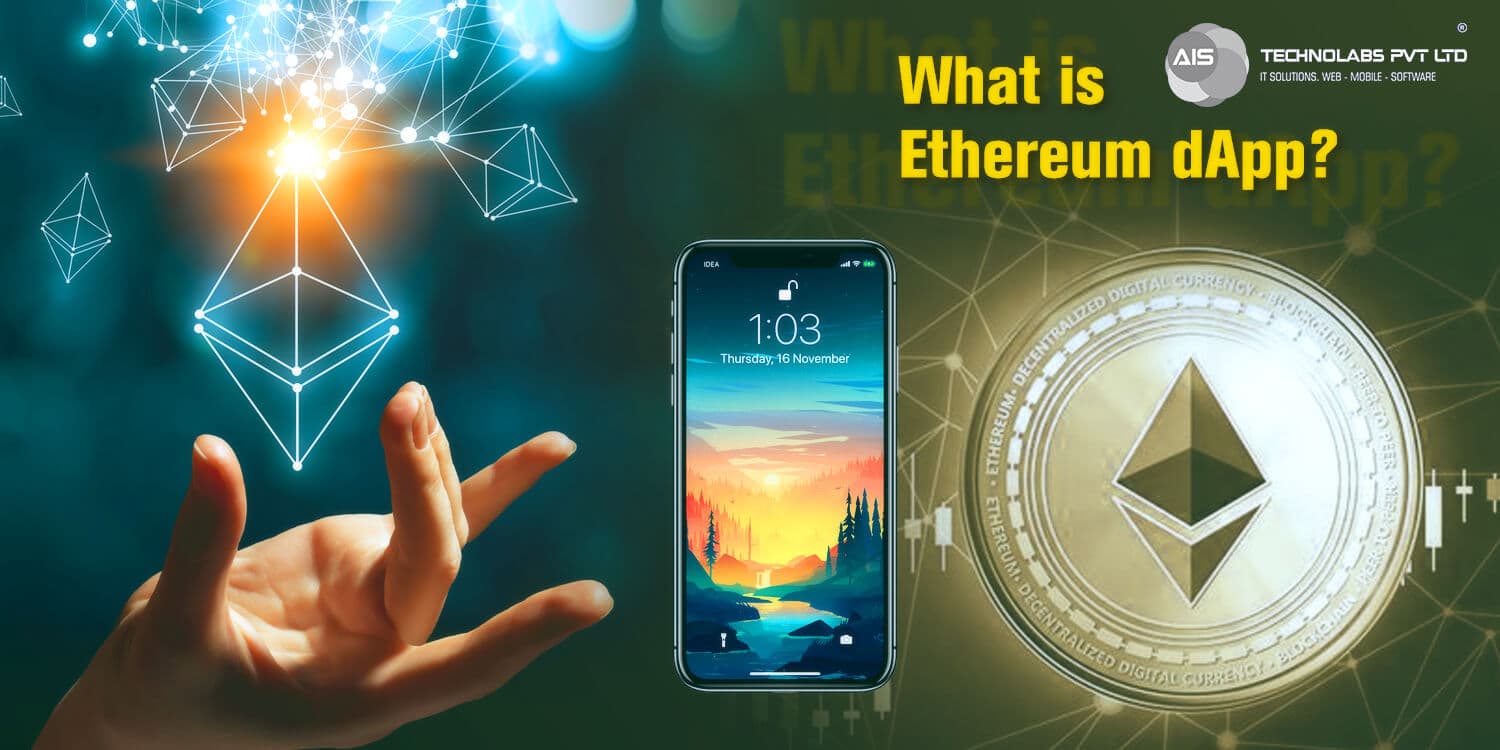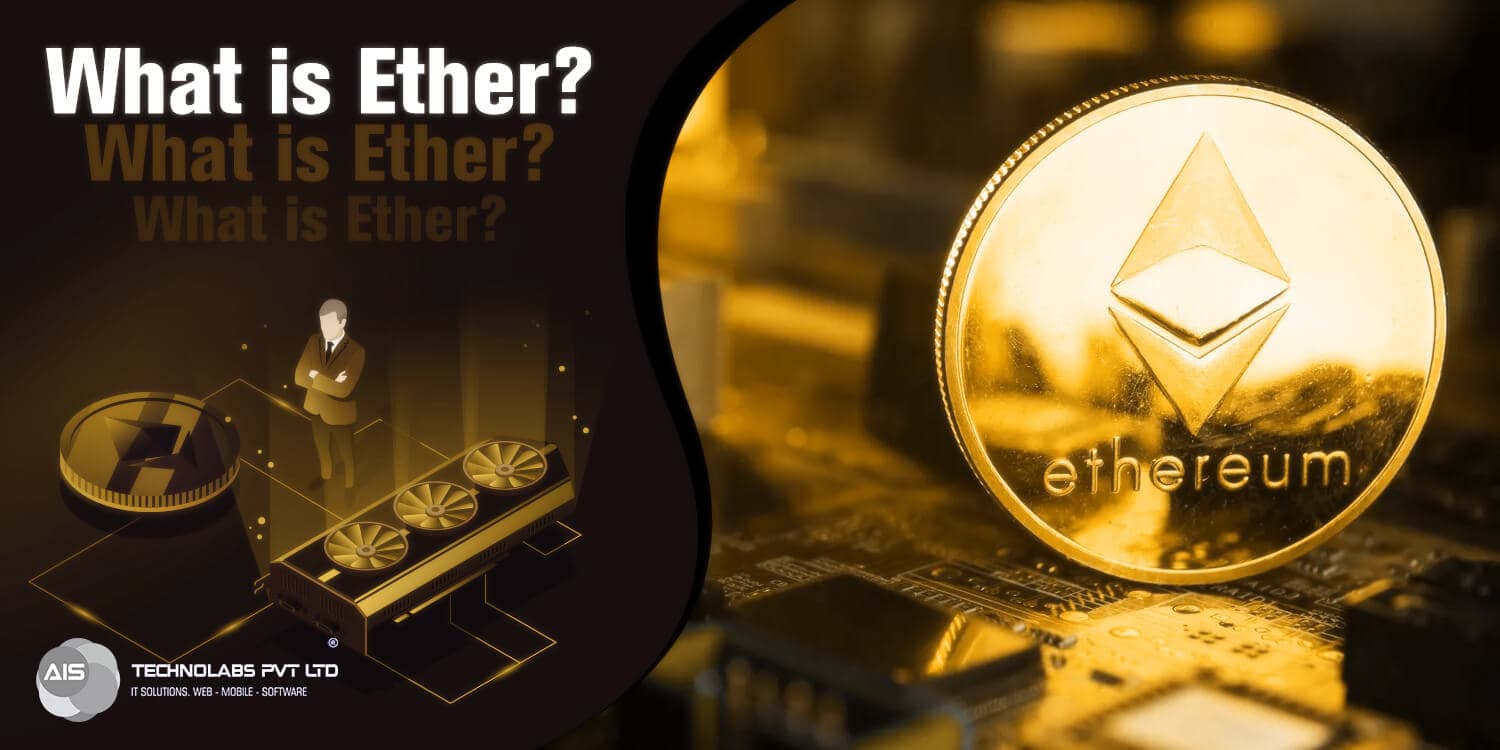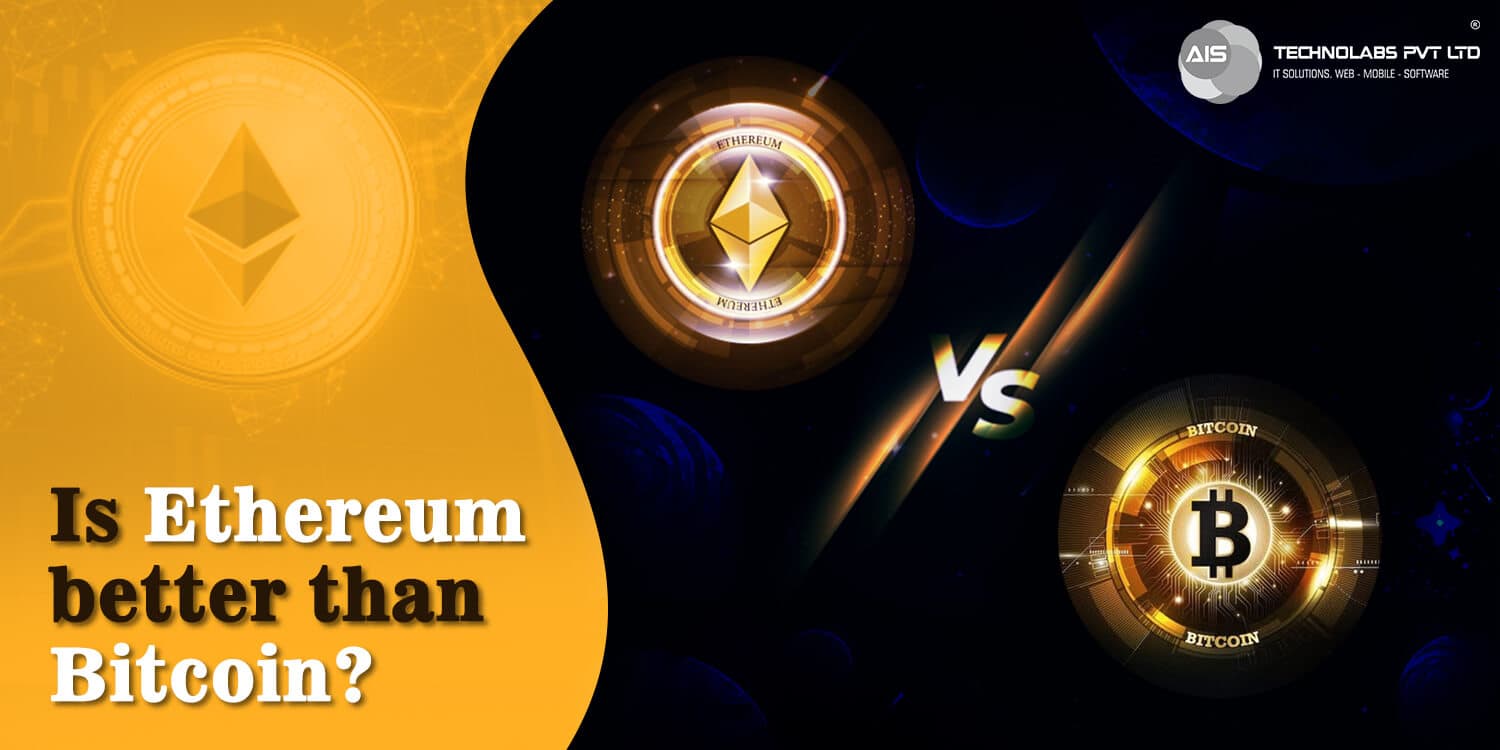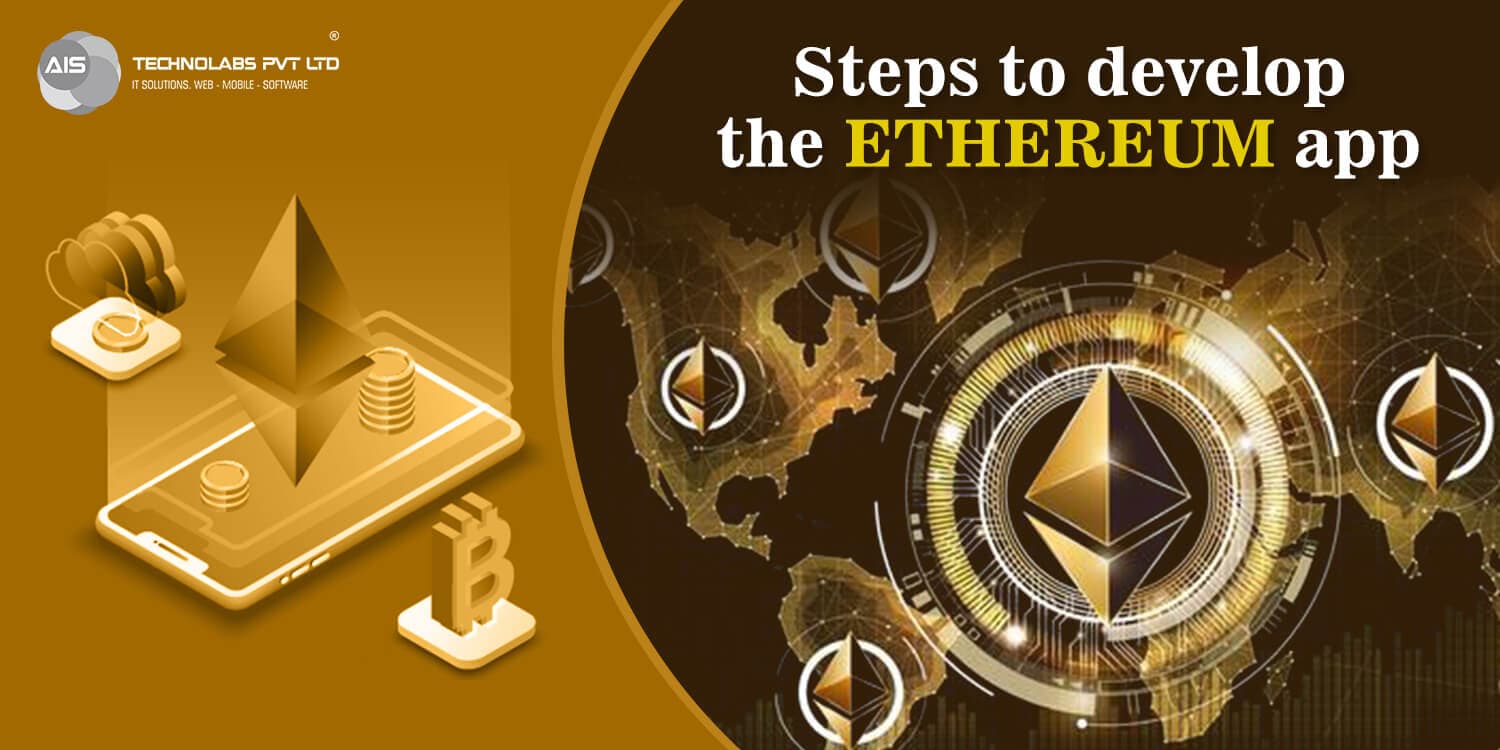Table of Content
(550 views)

Quick Summary
Ethereum is an open-source smart platform technology that has its crypto-currency, called Ether (ETH) or Ethereum. This platform has been developed in Solidity, a programming language. Ethereum is a public ledger that is decentralized. It means it is the consensus of replicated, shared, and synchronized digital data globally. It helps in recording and verifying transactions. The user of the blockchain network can create, publish, monetize and use applications on the platforms. The users can also use its crypto-currency for making payments. These days, many companies offer Ethereum Application Development services to small and large businesses.
About Ethereum
Like any blockchain, Ethereum is a secure database of information. Ethereum blockchain enables the application developers to develop decentralized applications (dApps). The decentralized applications can be used without the fear of risks of downtime, interference, or fraud from the third party. These applications also share a pool of computing power. Since the shared pool is limited. So, Ethereum decides who should get access to the computing power. Otherwise, the dApps that have an accidental infinite loop or some malicious program can take up the entire network.
What is Ethereum dApp?

Ethereum dApp is an application. It is built on a decentralized or distributed network. Such applications are the combination of smart contract and frontend user interface. Smart contracts are transparent and accessible like open APIs. Thus, Ethereum Dapp Developer can use a smart contract that has been written by someone else.
Use of Ethereum
Ethereum helps build any kind of smart contract and the main purpose for creating Ethereum is decentralization. They execute on a blockchain that is distributed across the globe. They don’t run on anyone's server or the computer. In order to use dApps on the Ethereum platform, the users have to pay fees. The fees vary based on the usage of computational power therefore it is called “gas”.
What is Ether?

Ether is a cryptocurrency of the open-source platform, Ethereum. With the help of Ether, the transactions on the blockchain network are done. Its purpose is to allow a market for computation. Such a market provides an economic incentive to the participants to verify and execute transactions. When the users want to make a transaction, which is recognized on a blockchain, they need to pay ether. The cryptocurrency, Ether, was purposely created to be used within the Ethereum blockchain framework. However, due to high demand of Ether in the global market, it is now accepted by some merchants and service vendors. Some online websites that accept Ether as payment are Overstock, Shopify, and Cheap Air.
Minting the crypto currency-Ether
The process of creating new ether on the Ethereum ledger is called Minting. The user cannot create new ether because it is created by the underlying protocol. Minting of Ether is done when a miner builds a block on the platform Ethereum. The protocol gives rewards in each block. These rewards are the incentives to the miners. The block rewards keep on changing from time to time. Currently, it is 2 ETH per block.
Time period of mining one Ethereum
The hash rate, cost of electricity, power consumption, and any fees paid to the mining pool or hosting services related to the mining operations are the factors that determine the rewards for mining Ethereum and receiving Ether. Such factors impact the overall price performance of the crypto market along with profitability and increase in mining difficulty targets.
Burning of Ether
The destruction or removal of ether from the Ethereum platform is called burning. On every transaction on Ethereum, ether burns. Ethereum's protocol automatically destroys the base gas fees, when a user pays for their transactions.
Ethereum Uses Proof-of-work
Ethereum uses a proof-of-work consensus protocol mechanism. A consensus mechanism is a way for all the computers within a network to agree on things such as the validity of transaction data. Proof-of-work involves using computing power to perform guesswork to validate blocks of transaction data. It also helps to publish the data to a network of computers worldwide.
Working of Ethereum’s Proof-of-work
The transactions on Ethereum are processed in blocks. Each block has block difficulty, nonce, and mixed Hash. This block data is directly related to proof-of-work. According to the Proof-of-work protocol, the miners are required to go through trial and error so that they can find the nonce to the block. Those blocks that can be added to the chain must have the valid nonce. Proof-of-work is also responsible for issuing new cryptocurrency into the system and giving incentives to the miners to do the work. It is the proof-of-work’s consensus mechanism that has kept Ethereum secure and decentralized for years.
Is Ethereum Better Than Bitcoin?

Bitcoin blockchain was purposely created to support cryptocurrency, while Ethereum was not created for the mentioned purpose. It was created for the transactions in the in-house currency for the applications that are built on the Ethereum blockchain. Ethereum has a broader concept than Bitcoin. It is a platform that aims to store information safely for all kinds of applications. Ethereum is a programmable network. It acts as a marketplace for games, financial services, and apps. They can be paid in Ether cryptocurrency.
Business insight of Ethereum
According to a report, Ethereum is the second most valued and demanded cryptocurrency in the world in May, 2021. The main competitors of Ethereum are Bitcoin, JP Morgan, IBM, Ripple, Microsoft, IOTA, Block stream, and NEO. They all are the big names in the business field investing in the blockchain software platform. Ethereum’s cryptocurrency Ether is a contender in a highly volatile cryptocurrency market. According to the analytics insight, Ethereum holds a market capitalization of $500 billion while for Bitcoin it is $1.080 trillion. The number of Ether in circulation was more than 100 million till 2018.
Evolution of Ethereum-Ethereum 2.0
Ethereum 2.0 or ETH2 or Serenity is a long-awaited update of the Ethereum blockchain network. The purpose of such an update is to enhance the overall performance of the existing network. Ethereum 2.0 upgrade will help the applications built on Ethereum 1.0 platform to survive for the long-term and scale up their services to the ever-growing demand. The upgrade will also solve the problem of the speed of transactions on Ethereum. Currently, around 15 transactions per second are processed by Ethereum but after the upgrade, it can process around tens of thousands of transactions per second. Such an upgrade will take Ethereum to meet the global economy. Ethereum Application Development is a trending topic nowadays.
Steps to Develop The Ethereum App

If you are looking to build your Ethereum app, you can take the Ethereum development services of the best app development company near you. The application developer follows the below-mentioned steps for developing the Ethereum app:
- Step 1: Look for the blockchain that meets all your development needs
- Step 2: Start with code blockchain on your backend server
- Step 3: Write some smart contract
- Step 4: Deployment of the smart contract
- Step 5: Make calls to the smart contract
- Step 6: Set up your account
- Step 7: Make Transactions with your smart contract using ether
Once the transaction is done, participants need to verify that their transaction has been accepted and processed. If you are looking for the ethereum development services, we offer the best services at the affordable prices.
Conclusion
Ethereum Application Development is the latest technology for app development. It makes use of blockchain technology to build powerful gaming applications, financial services applications, and more. Development of applications using ethereum is trending nowadays. If you are looking for Ethereum development services, we are the trusted name in the market for years. We are a leader in the Ethereum app development industry to provide the best services. Our applications are highly customised to meet the demand of the clients. We have a team of dedicated professional developers to build the applications.